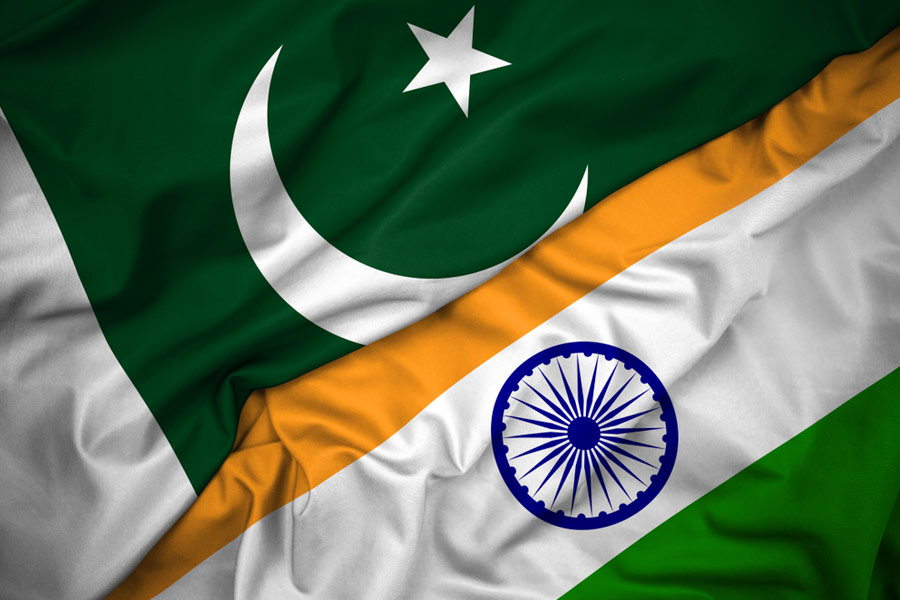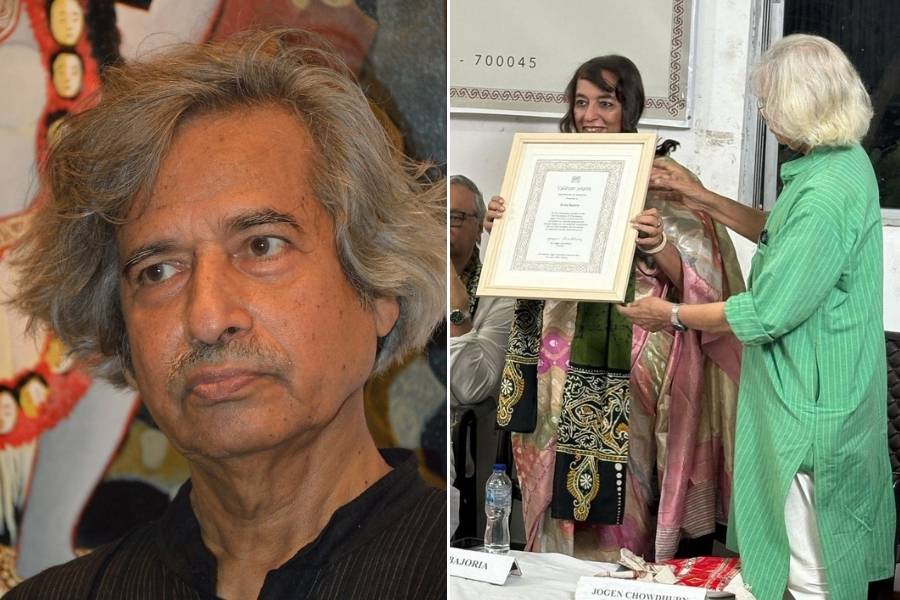 |
| Sliced brinjal and fish in spicy sauce |
I was reading this memorable quote by the most talented cellist of all times, Pablo Casals, in a newspaper the other day. “The love of one’s country is a splendid thing,” he said. “But why should it stop at the borders?” Truer words, I thought, were never spoken — especially in the context of food. The most visible sign of this love seeping through concertina wires lies in the expansion of our food vocabulary. How else would a phrase like firanghee food have crept into our lives — and on our tables?
Firanghee is the word for the foreigner who came to India. And firanghee food is all that the foreigner brought in — and the local happily co-opted. The foreigners’ list in Bengal was a long one — it included the Portuguese, the Dutch, the English, the Armenian, the Baghdadi, and a host of others. And as they came and went, the cuisine of Bengal, especially that of Calcutta, expanded to accommodate the many new influences left behind by the travellers, the missionaries and the traders.
My friend, Calcutta chef Pradip Rozario, was reminded of all that when he was watching a popular old Bengali film some days ago. Anthony Firingee — starring who else but Uttam Kumar as the poetry- and music-loving Indo-Portuguese hero — set the chef thinking, and soon he was in the kitchen, rustling up some old firanghee favourites like cubed porked with potatoes, chicken a la Kiev, spicy sausages and fish cooked with brinjal.
“These were dishes that would always be eaten with great relish during festive seasons such as Christmas and on New Year’s Day,” says chef Rozario,who runs K.K.’s Fusion in Calcutta. The chef says he picked up the recipes of many of the firanghee dishes from his mother.
 |
| Chicken a la kiev |
One of my most favourite cookbooks — a wonderful collection called The Calcutta Cook Book, written by Minakshie Das Gupta, Bunny Gupta and Jaya Chaliha –– mentions the various foreign culinary influences in Bengal. The Portuguese traders were among the first to leave their mark. The book says that the biscuits on the ship, which were as hard as stones, kick-started a flourishing tradition of baking in Bengal. The famous Bandel cheese of Bengal — a salted variety that goes especially well with salads — was a gift from the Portuguese as well. Later, when the Jewish community of Calcutta — most of whom were Baghdadi Jews — prospered, a spate of Jewish baked goodies and dishes such as roast chicken with potatoes became popular.
The European ways of cooking pork came with the traders. (Pork, according to my food guru K.T. Achaiya, finds mention in ancient times, including in The Mahabharata, but was not really a part of the common man’s diet.) The Calcutta Cook Book suggests that the name Baranagar, an area a few kilometres from Calcutta where the mynheers lived, gets its name from baraha — the Sanskrit for pig — and nagar, because pork was much love by the Dutch. An account, written in 1676, mentions a “hogg factory” where 3,000 hogs were killed and salted for the crew on their sailing ships.
The French brought with them loaves, pastries, sauces and dressings. Though the omelette is believed to have originated in ancient Mesopotamia, the French version was soon a part of the Bengali’s life — so much so that the Bengalis even have their own name for an omelette, which they call mamlet. Chef Rozario’s firanghee special menu includes a variation where the egg is stuffed with spinach.
The Armenians in Calcutta grew grapes and used the vine leaves for their dolma — which was later adapted by the Bengalis to suit their own tastes. Vine leaves gave way to the more easily accessible cabbage leaves, and the world dolma was used with the indigenous parwal, to make way for potoler dolma.
All this makes me think that food — like the sound of music — has no barriers. The firanghee in Bengal did a host of things — set up churches and schools and taverns and hotels, traded and oppressed, and mingled and married. And while they did all this, they left a part of their heritage behind. Soon, of course, there was a marriage of traditions. And firanghee food was the happy outcome.
Poached fish with bell pepper and okra (serves 2 - 4)
 |
Ingredients
250g diced bekti fish • 1 diced red bell pepper • 1 diced yellow bell pepper • 75g whole okra
• 3 cups fish stock • salt and pepper as required • 2 tbs chopped coriander leaves
Method
Prepare some fish stock by allowing fish bones to simmer in lots of water with onions, carrots and peppercorns. Keep the stock aside. Now wash and dry the fish pieces. Heat the stock in a pan. Add salt and pepper and let it simmer. Add the chopped bell pepper. Now add the whole okra and the fish to it. Cover the pot with a lid and bring to a boil. Lower the heat and let it simmer for 10 minutes. Remove from heat. Sprinkle chopped coriander leaves on the fish stew, and serve hot with steamed rice. It looks good — mainly because of the colours of the bell peppers and fresh coriander leaves — and tastes good too.
Photographs by Subhendu Chaki










